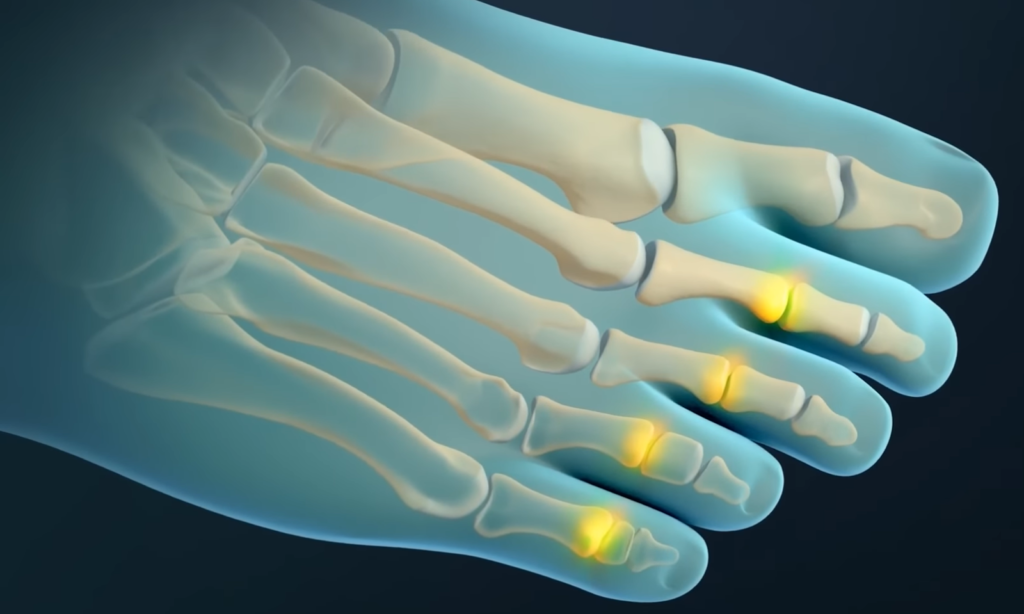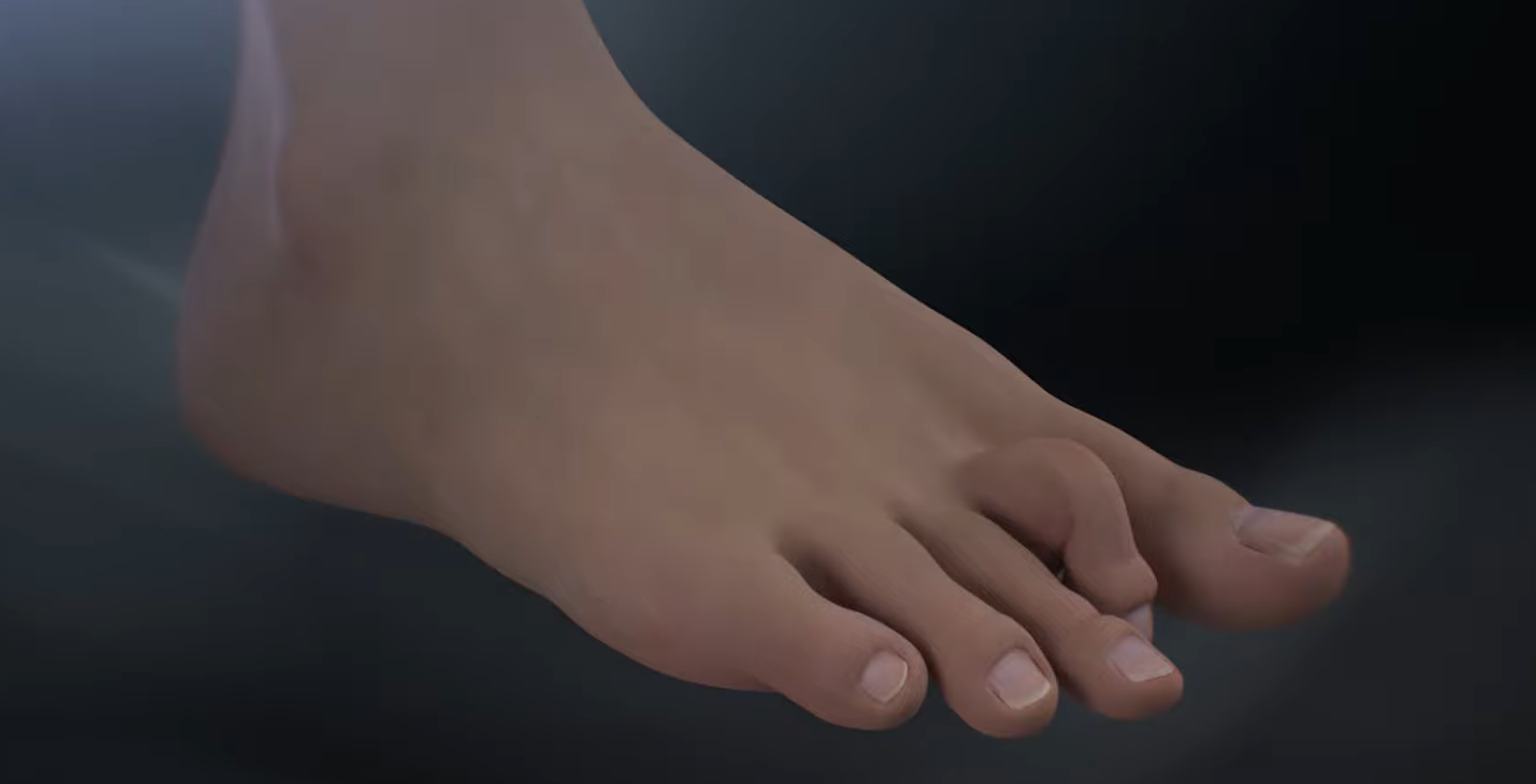What is Hammer Toe?
A hammer toe is a foot deformity that results in an abnormal bend of the toes. This condition predominantly impacts the middle three toes with the second toe undergoing the most frequent alteration. Hammer toe is often the result of an imbalance in the functional operation of the foot’s joints and tendons due to persistent stress over an extended period of years. Genetics also plays a significant role in the presence of hammer toe, as it is commonly found among family members.
While exploring hammer toe, you may also find insights into flat feet relevant. You may also like to delve into their distinct characteristics and treatment approaches for comprehensive foot health.
Causes of Hammer Toe

There are several factors that can lead to the development of hammer toe, including:
- Wearing shoes that do not fit properly like too tight footwear or high heels, which force the toes into a restricted space;
- Trauma to the foot such as severe toe stubbing;
- Diseases such as arthritis and diabetes that cause nerve and muscle damage;
- Genetic predisposition.
Symptoms of Hammer Toe
While bent toes are the most obvious sign of this condition, other symptoms associated with hammer toe are:
- Discomfort and rigidity during toe movement;
- Corns on top of the toe or toes due to rubbing against the shoe’s toe box;
- Calluses on the bottom of the toe or toes;
- Pain on the ball of the foot;
- Redness and inflammation at the affected joints.
Prevention Strategies
Though not harmful if it doesn’t affect your normal walking or running pattern, hammer toe can become painful and problematic if left untreated. Prevention, therefore, is paramount and can be achieved by following these guidelines:
- Accurate measurement of your feet;
- Ensuring appropriate space (around half a thumb) for your toes while standing;
- Purchasing shoes based on comfort, not just size;
- Preferably buying shoes towards the end of the day to accommodate for foot swelling;
- Opting for wide shoes with flexible soles and avoiding pointy ones;
- Performing simple toe exercises to maintain flexibility and strength;
- Limiting the usage of high-heels and selecting well-designed flat shoes;
- Avoiding shoes that are too short, narrow, or shallow.
When to Consult a Podiatrist

Although the progression of the hammer toe is often irreversible, its progression can be controlled or even stopped. It is recommended to consult a podiatrist if the toe becomes painful or if it interferes with your ability to walk. The podiatrist will be able to provide useful advice and treatment options such as padding or taping the toes to relieve pain and adjust their position.
Potential Complications
Persistent hammer toe can lead to a variety of complications, including difficulty in walking, pain and discomfort on movement, complications due to associated diseases like diabetes, and social embarrassment due to the appearance of the foot or the need to wear special shoes.
Current Treatment Options
There are several treatment options available for hammer toe which range from conservative to surgical. Conservative treatments include the use of custom orthotics to alleviate pressure on the toes, physical therapy, and in some cases, the use of medications for pain relief. If conservative treatments fail to provide relief, surgical options are available to correct the deformity.
Conclusion
Understanding hammer toe, its causes, symptoms, and treatments can help people who are suffering from this foot deformity. Early detection and proper prevention techniques are key to managing this condition. Consulting a podiatrist at the first sign of hammer toe is essential for appropriate treatment and preventing further complications.
It’s essential to remember that hammer toe is a prevalent condition primarily driven by tight or ill-fitting footwear, injuries, health conditions like arthritis and diabetes, and genetics. The condition, characterized by a bent deformation of the toes, is often accompanied by pain, stiffness, corns, calluses, and inflammation. Prevention, largely through proper shoe selection and foot care, is always better than cure. Timely consultation with a podiatrist can halt its progression, relieving discomfort and potentially avoiding surgical treatment. The importance of understanding, preventing, and managing hammer toe cannot be overemphasized for maintaining foot health, mobility, and overall quality of life.


